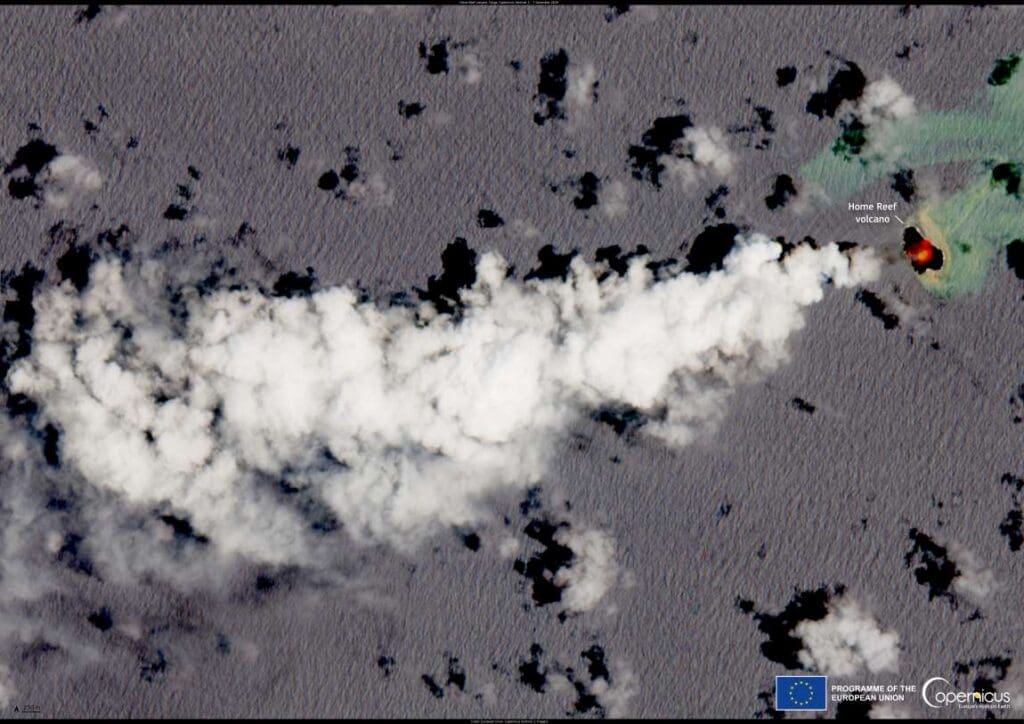By Manon JACOB | AFP
Washington, United States – Climate skeptics are scapegoating a weather modification technique known as cloud seeding to deny the role of global warming in historic floods that have recently devastated countries from Brazil to Kenya.
Record rainfall brought to some regions by the natural weather cycle El Nino matches an expected increase in extreme events, experts say.
But online, claims have repeatedly been made that geoengineering –- not carbon emissions –- is to blame.
“Dubai airport looks like an apocalyptic movie. Videos of the flooding are insane,” said Robby Starbuck, a conservative American commentator, to his more than 460,000 followers on X in April, after the Gulf city was hit by unprecedented downpours.
“I’ve seen some blaming climate change when the cause is actually from the use of weather modification. Cloud seeding where chemicals are sprayed in clouds to create rain caused this.”
Claims that weather had been manipulated appeared after every major flood this year, including in Zimbabwe, the United Arab Emirates and other nations. According to Google Trends data, searches for cloud seeding reached a record high after the Dubai floods in April.
“I have not agreed to our planet having cloud seeding everywhere, have you?” was typical of posts among X users in late May, blaming the recent rainfall on a “man-made climate crisis.”
Cloud seeding, which introduces tiny particles into the sky to induce rain over small geographical areas, has gained popularity worldwide as a way to combat drought and increase local water supplies.
But scientists say the technique cannot create weather — nor can it trigger rainfall at the scale observed in countries such as Germany and the United States.
“Due to the strong natural variability of clouds, there exists very little scientific proof that cloud seeding has indeed a measurable effect on precipitation,” said Andrea Flossmann, co-chair of an expert team on weather modification at the World Meteorological Organization.
Experts, meanwhile, say climate change doubled the likelihood of floods in southern Brazil and worsened the intense rains caused by El Nino.
“There’s definitely a consensus that climate change is responsible for many of these extreme weather events,” said Mariana Madruga de Brito, a Brazilian scientist from Rio Grande do Sul, the state that suffered historic flooding in May.
She told AFP she saw people posting photos of clouds on social media shortly after the floods, claiming they had been “fabricated” and questioning scientific institutions.
But she insisted cloud seeding “cannot be causing events of this magnitude.”
Reinforcing climate denial
Di Yang, an assistant professor at the University of Wyoming, said extensive research over several decades has shown “no definitive large-scale or long-term impacts from cloud seeding.”
Still, the technique has become a recurring target for climate skeptics. AFP has debunked several false claims of weather manipulation after major floods in recent years.
Callum Hood, head of research at the Center for Countering Digital Hate, said that as severe weather events become more frequent, “climate deniers are putting extra efforts into claiming these extremes have nothing to do with climate change.”
“You see this every summer now,” he told AFP.
As more changes are recorded in seasons and ecosystems, Hood said “a slightly more conspiratorial and newer argument” is overtaking older narratives that simply deny Earth’s warming “by trying to argue that extreme weather events have this other cause, whether it’s geoengineering or something else.”
Lincoln Muniz Alves, a researcher at the Brazil National Institute for Space Research, said the dissemination of false narratives not only obstructs effective communication during environmental crises but also “reinforces the views of those who deny the reality of climate change.”
Weather modification methods are controversial in the scientific community, due in part to the potential for unintended consequences such as excess rain and pollution.
But experts say such caution should not discredit the reality of the climate crisis.
“This focus on cloud seeding misses the larger picture –- for more than a century, humans have been releasing greenhouse gasses (that) have warmed the planet and made heavy rain more likely in many regions of the world,” said Edward Gryspeerdt, a research fellow at Imperial College London’s Grantham Institute.
“We are already manipulating the weather at a global scale (larger) than would ever be possible through cloud seeding.”
mja/df/adm/mlm
© Agence France-Presse
Featured image credit: Freepik




